

Medieval illuminated manuscripts often contained representations of four well-known biblical stories that depicted God's fiery wrath directed at humans: the Apocalypse, the destruction of Sodom and Gomorrah, the trials of Job, and the Tower of Babel.
Pouring fire from the sky seems to be the preferred method of the Christian God to show his displeasure. Verses 16:17-21 of the book of Revelations describe how God commanded seven angels to pour out their "plagues of God's wrath" into the air, resulting in plagues and disasters. The plague of the seventh angel produced everything we see on the Maison-Dieu/Tower cards: lightning and thunder, earthquakes, hailstorms, and the fall of cities.
A quote from chapter 16 of Revelations might explain why there are one or two suns in the corner of most Maison-Dieu/Tower cards. Revelations 16:8 says: "and the fourth angel poured out his cup upon the sun; and power was given unto him to scorch men with fire."
God's wrath is a recurring theme in religious texts, especially in the Bible. It is often depicted as a destructive force that strikes humans to punish their sins and disobedience.
In short, the Maison-Dieu card of the Tarot of Marseille can be (but not only, as we will see) a symbolic representation of divine wrath, illustrated by natural disasters and supernatural events. It recalls biblical stories where God punishes humans for their sins and disobedience, and it finds its roots in the rich medieval iconographic tradition.
God's wrath, as described in religious texts, is often provoked by human actions deemed morally and ethically reprehensible. Here are some main reasons that trigger divine wrath according to the Bible:
Disobedience to God's commandments and sins are the main reasons for divine wrath. Actions that go against divine laws are seen as serious offenses.
Moral corruption and violence among humans are frequent reasons for divine wrath. When human actions become too wicked, God intervenes to purify and punish.
The worship of false gods and idolatry are serious offenses in the eyes of God. Humans are punished for abandoning the true God and worshipping idols.
Social injustice, oppression of the poor and vulnerable, and cruelty towards others are reasons that provoke God's wrath. God demands that humans act with justice and compassion.
Human arrogance and rebellion against God are reasons for divine wrath. When humans defy divine authority and act with pride, God punishes them for their arrogance.
The destruction of Sodom and Gomorrah is one of the most famous stories in the book of Genesis that illustrates divine wrath. These cities are destroyed by fire descending from the sky due to their sins and corruption. Genesis 18:20-21: "God announces to Abraham that the outcry against Sodom and Gomorrah is great and their sin is very grievous. He decides to go down to see if their actions are as bad as the outcry that has reached him". Genesis 19:24-26: "The Lord rains sulfur and fire on Sodom and Gomorrah. Lot's wife, who looks back while fleeing, is turned into a pillar of salt".
The sins of the inhabitants of Sodom and Gomorrah are numerous and varied. They include sexual immorality, violence, inhospitality, and social injustice. These actions provoke God's wrath.
The destruction of Sodom and Gomorrah by fire and sulfur is a direct manifestation of divine wrath. The rain of sulfur and fire is a powerful image of divine wrath. It shows God's destructive power when he decides to punish sinners. Genesis 19:24: "The Lord rained down sulfur and fire on Sodom and Gomorrah, from the Lord out of the heavens."
The biblical story and artistic representations of this destruction influence the symbolism of card XVI - MAISON-DIEU in the Tarot of Marseille, which represents catastrophe and divine punishment.
The Tower of Babel is the biblical story most often associated with the Maison-Dieu/Tower card in tarot, and may explain why people are falling from the tower in cards dating from around 1500 and after. In the biblical story, the tower was not destroyed and no one fell from the Tower, but an alternative version of the story captured the medieval imagination and was absorbed into folklore and art.
The story of the Tower of Babel is found in the book of Genesis. After the Flood, the descendants of Noah decide to build a tower that would reach the heavens. The construction of the Tower of Babel is motivated by human arrogance and the desire to defy God. Men want to reach the heavens by their own means, which is seen as an act of rebellion and defiance and provokes God's wrath.
God's response to human arrogance is to confuse their language (making communication and cooperation in building the tower impossible) and scatter them over the earth (The confusion of languages leads to the dispersion of people over the earth, thus preventing the realization of their project). This dispersion is a punishment for their arrogance and attempt to defy God.
Medieval representations of the Tower of Babel often show the tower under construction with elements suggesting confusion and dispersion. Some illustrations show the tower destroyed by fire, reflecting an alternative version of the story absorbed into folklore and art.
Genesis 10:8-12 describes Nimrod as "a mighty one on the earth" and "a mighty hunter". He built four cities in Mesopotamia, including Babel, so he was identified in popular imagination as the architect of the Tower of Babel, and thus an arrogant rebel against God. Nimrod was punished by a lightning bolt that threw him from the tower.
The Tower of Babel is another famous illustration of divine wrath in the Bible. Although the destruction of the tower is not explicitly mentioned in the biblical text, the dispersion of people and the confusion of languages are manifestations of God's wrath in response to human arrogance.
The biblical story of Job may have inspired an alternative representation of the Maison-Dieu/Tower (as we will see below). Indeed, the illustration on the right has all the components of card XVI in Viéville and Vandenborre: shepherd, sheep, and fire from the sky. Job was made to endure every imaginable disaster as a means of testing his faith in God. In the Book of Job 1:13-16, one person after another appears before Job to tell him that a disaster has happened to his family or possessions. At one point, a messenger enters and says: "The fire of Allah has fallen from the sky, and burned the sheep, and the servants, and consumed them; and I am the only one who escaped to tell you".
The Book of Job tells the story of a righteous and pious man who is subjected to extremely difficult trials to test his faith. God allows Satan to strike Job with calamities to see if he will remain faithful.Job 1:6-12: "Satan appears before God and claims that Job is faithful only because he is prosperous and protected". God allows Satan to test Job by inflicting suffering on him, but without touching his life.
Job endures a series of disasters that take away his possessions, his children, and his health. These trials are tests of his faith and fidelity to God. Job loses his flocks, his servants, and his children in successive disasters. He is struck with painful sores all over his body. Indeed, Satan strikes the man with "malignant boils" from the soles of his feet to the crown of his head. Job accepts his suffering with patience and continues to believe in divine justice.
The story of Job is an example of human suffering and tests of faith allowed by God. Job's trials, though caused by Satan, are perceived as indirect manifestations of divine wrath or means of testing human fidelity.
In the Middle Ages, every Italian city was bristling with large tower houses occupied by important families. The Tuscan town of San Gimignano is still known for its tower houses, although only 14 of the original 72 towers that overcrowded the town at the end of the Middle Ages remain today. The families in each city were constantly engaged in competitive one-upmanship, the prize being the ability to look down on their neighbors from the height of the tallest tower in the neighborhood. The tallest tower house in San Gimignano rises to 230 feet, while the tallest tower house still standing in Bologna, the Torre degli Asinelli, rises to 319 feet. Without a doubt, these towers were a symbol of pride and perhaps a manifestation of arrogance on the part of the families who built them.
In Canto XXXI of Inferno, Dante reinterprets the biblical figure of Nimrod, traditionally associated with the construction of the Tower of Babel. The Florentine poet places him among the chained giants, symbols of human pride defying divine authority. The incomprehensible phrase spoken by Nimrod ("Raphèl maì amècche zabì almi") is a direct reminder of the confusion of languages inflicted by God following the presumptuous attempt to build a tower reaching the heavens. Dante brilliantly transforms the biblical narrative into poetic justice: the one who caused the linguistic fragmentation of humanity is eternally isolated in his own incomprehensible language. This representation fits perfectly with Dante's principle of contrapasso, where each punishment reflects the nature of the sin. Through Nimrod, Dante illustrates how human hubris seeking to rise to the divine level inevitably leads to confusion and spiritual isolation.
The creators of the early Italian tarot decks may have been inspired by these Italian tower houses. These towers, symbols of the arrogance of Italian families, recall the Tower of Babel, where human arrogance led to divine punishment. The destruction of the tower by lightning in the Maison-Dieu/Tower card can thus be seen as a representation of divine wrath against human arrogance, similar to the dispersion of people and confusion of languages in the Tower of Babel story.
In the Maison-Dieu/Tower card in the Catelin Geoffroy Tarot, Orpheus plays a hurdy-gurdy and makes the fatal mistake of looking back over his shoulder at his beloved Eurydice, thus failing the test of faith. The Devil grabs Eurydice around the waist and drags her to the underworld.
Orpheus, a famous musician and poet in Greek mythology, is deeply in love with his wife Eurydice. When Eurydice tragically dies, Orpheus decides to descend to the Underworld to bring her back to life. Thanks to his enchanting music, he manages to move Hades and Persephone, the rulers of the Underworld, who agree to let Eurydice return to the living under one strict condition: Orpheus must not turn to look at Eurydice before leaving the Underworld.
The condition imposed by Hades can be seen as a divine test or trial. Orpheus, despite his love and determination, succumbs to temptation and turns to check if Eurydice is following him, just before leaving the Underworld. By breaking this promise, he provokes the anger of the gods of the Underworld. By turning around, Orpheus loses Eurydice forever. She is immediately pulled back into the darkness of the Underworld, and this time, there is no possible return. This punishment is a manifestation of divine wrath, resulting from the transgression of the condition imposed by Hades.
The myth of Orpheus and Eurydice can be interpreted as a lesson on the consequences of disobedience and defiance towards the gods. Divine wrath manifests through the irreversible loss of what is most precious to Orpheus, due to his inability to respect the divine condition. Divine wrath in this context is subtle but powerful. It shows that even seemingly minor acts of disobedience can lead to severe and irreversible consequences.
Although the myth of Orpheus and Hades is not directly analogous to biblical stories of divine wrath like the destruction of Sodom and Gomorrah or the Flood, it shares similar themes of transgression and divine punishment.
The XVI card in the Tarot of Paris is labeled 'LA FOUDRE' (The Lightning), but it seems to illustrate the mouth of Hell. A popular theme in medieval art was sinners being devoured by the Devil in the mouth of Hell, rendered as the jaws of a monster. In this card, a confused mass of demons and people swirls towards the black jaws of Hell emerging from the right edge of the card.
The fall of the damned is a consequence of divine wrath. Sinners and transgressors are hurled into destruction, often represented by images of falling or entangled bodies. In this ancient version of card XVI - MAISON-DIEU, we see entangled bodies, symbolizing the fall of the damned. This image reinforces the idea of divine punishment where sinners are plunged into chaos and suffering.
Card XVI - MAISON-DIEU in the Tarot of Marseille presents rich symbolism that can be interpreted in different ways. Contrary to the idea of divine punishment, it is possible that the master craftsman wanted to evoke another aspect of the relationship between humans and the divine.
The name "Maison-Dieu" can be interpreted as a reference to a sacred or divine place. The card could represent a sacred place where the soul is purified and transformed, aspiring to reach higher levels of spirituality and consciousness. In this context, the card could represent a process of purification and spiritual elevation, where the rising flame symbolizes the soul's aspiration to draw closer to God.
The term "Hôtel-Dieu" comes from medieval French and literally means "House of God". These institutions were hospitals founded and managed by religious orders to provide care for the poor and the sick. The Hôtel-Dieu were places of charity and care, considered extensions of the Church's divine mission. They symbolized divine compassion and aid. The connection between "Maison-Dieu" and "Hôtel-Dieu" can be explored in the context of purification and spiritual elevation. Both terms share the idea of "House of God", where humans seek to connect with the divine.
Both terms evoke the idea of places where humans aspire to draw closer to God. In tarot, the rising flame of the Maison-Dieu can symbolize a process of purification and spiritual elevation, while the Hôtel-Dieu represents divine compassion and aid, through care for the sick and the weak.
The crown at the top of the tower can be interpreted in several ways:
In the early Marseille tarot decks, the flame depicted on card XVI - MAISON-DIEU is ascending, starting from the top of the tower and rising towards the sky.
The multicolored bubbles around the tower add an interesting dimension to the card:
The three windows of the tower can be interpreted in several ways:
Card XVI - MAISON-DIEU in the type II Marseille tarot decks, such as those by Madenié and Conver, presents different symbolism compared to earlier versions. In these versions, the flame is descending, starting from the sun and decapitating the crown at the top of the tower.
The descending flame in type II Marseille tarot decks can be interpreted in several ways:
The sun in the Maison-Dieu card is a source of light and warmth, symbolizing divine presence and celestial power. The descending flame from the sun reinforces the idea of divine light descending to purify and transform.
The crown at the top of the tower is a powerful symbol in the Maison-Dieu card. Its decapitation by the descending flame can be interpreted in several ways:
This Maison-Dieu, previously called LA FOUDRE (The Lightning) or The Flash, presents a distinctive design that emerged in Paris in the 17th century before spreading to northern France and Belgium a century later. The first known use of this design is attributed to Jacques Vieville, whose tarot was printed in Paris around 1650. A century later, this motif reappears in the cards of the Rouen-Brussels model, such as the Vandenborre Tarot.
Cards XVI - LA FOUDRE of the Jacques Vieville Tarot and the Vandenborre Tarot, variants of the Maison-Dieu, present rich symbolism that can be interpreted in relation to the myth of Job (seen above). These cards show a tree struck by lightning, with figures below.
The Tree embodies perpetual regeneration, fertility, and abundance, through its cycle of death and rebirth across the seasons. Its longevity makes it a symbol of immortality and ancestral wisdom. In Christian tradition, the Tree appears at crucial moments: the Tree of Knowledge in Eden, then the tree of the Cross (the cross on which Jesus was crucified is often metaphorically referred to as a "tree") which redeems humanity, establishing a duality between fall and redemption.
This image can be interpreted in relation to the symbolism of the tower in the Maison-Dieu card. The tree struck by lightning can be seen as a variant of the tower struck by lightning in the Maison-Dieu card. Both symbols represent destruction and divine punishment. The figure below the tree struck by lightning symbolizes the fall of sinners, plunged into destruction by divine wrath.
French occultist and magician Éliphas Lévi stated that the card likely depicted the Tower of Babel, and the two people falling from the tower were Nimrod and a false prophet. Lévi pointed out that the body of the person falling in front of the tower forms the Hebrew letter Ayin. He interpreted the card as signifying a reversal of fortune or the punishment of pride.
Oswald Wirth, an influential occultist who lived a generation after Lévi, designed a deck to illustrate occult principles and was the first to put Hebrew letters on the cards. We see the letter Ayin in the lower right corner. The yellow objects falling from the sky, mixed with bricks, are not flames, according to Wirth, but Yods, the first letter of God's name in Hebrew.
Wirth called his card Fire from Heaven and said that the high tower attracts lightning emanating from the sun of reason. One of the falling people is a fanciful idealist, the other is the architect whose structure collapses with him, obviously a reference to Nimrod. The Tower embodies energy hardened into dogma, as well as exaggerated ambition that will inevitably lead to hard lessons.
When the London-based occult lodge, The Hermetic Order of the Golden Dawn, shifted the Hebrew alphabet letters associated with each major arcana card, the tower acquired the letter Peh, aligning this card with Mars. Many Golden Dawn Tower cards are Martian: ambition, struggle, war, courage, danger, destruction. The Golden Dawn refers to the lightning of Mars, although in mythology, it is usually Jupiter who wields lightning.
The interpretations of Golden Dawn cards are similar to those of Wirth: a dramatic awakening, or the sudden collapse of outdated beliefs so that something new can emerge.
A. E. Waite refers to the Tower as the House of Doctrine and the House of the False. The people falling from it are atheists and heretics who deny spiritual realities. The king's crown being toppled from the top of the tower denotes "the fall of intellectual error committed in trying to understand the ways of God". Waite aligns with Wirth in saying that the objects falling from the sky are Yods. His interpretation of this card is the same as Wirth's.
The central structure of the card resembles a cathedral, a powerful symbol of spirituality, faith, and community. The cathedral represents a sacred place, a space for connection with the divine. Its presence in the Tower card reinforces the idea of spiritual quest and relationship with the sacred. Cathedrals are also symbols of community and tradition. They represent the values and beliefs shared by a society. The division of the cathedral into two can symbolize a rupture or division within the community or traditional beliefs.
The division into two symbolizes a rupture or separation. It can represent the fragmentation of beliefs, values, or relationships. This separation may be the result of conflicts, disagreements, or spiritual crises. The crack at the center of the structure can also symbolize a process of transformation and revelation. The separation allows one to see beyond appearances and discover hidden truths.
The red sun can represent passion, energy, and vitality. Its intense red color symbolizes strength and power. In the context of the card, it can be seen as a source of light and illumination, revealing hidden truths and bringing a new perspective. It represents divine light that illuminates darkness and reveals hidden truths.
Card XVI - The Tower in the Deviant Moon Tarot, inspired by the graphics of the Jacques Vieville and Vandenborre tarot decks, presents rich and complex symbolism based on the myth of Job. However, this version introduces two notable changes: the sheep are replaced by some kind of chickens and the branches of the tree are on fire.
The burning branches symbolize purification by fire. They represent the elimination of negative elements and spiritual transformation. The divine fire purifies the tree, a symbol of life and growth, allowing rebirth and renewal. The burning branches represent the end of old elements and the birth of new ones.
The chickens can represent vigilance and protection. They are often associated with watchfulness and guarding. Their presence in the card can symbolize divine vigilance and spiritual protection. The replacement of sheep by chickens can also symbolize the transformation of beliefs and truths. Chickens, with their wings, add a dimension of movement and freedom, contrasting with sheep that symbolize submission and sacrifice.
The character with the wand adds a human dimension to the card. The wand is often associated with guidance and protection. It represents authority and direction, reminding of God's presence in times of crisis and transformation.
The tower, with its flames and demonic elements, can symbolize the house of the devil. It represents a place of corruption, temptation, and sin, where individuals are trapped by their desires and passions. The presence of flames inside the tower can symbolize a trial of purification. The flames represent purification by fire, eliminating negative elements and allowing spiritual transformation.
The hybrid man, half-man half-demon or animal, is chased by the hybrid woman with an eye on her belly. The man chased by the woman symbolizes banishment and exile. He no longer lives at home and is forced to leave the house of the devil. This can represent the need to get rid of negative and corrupt elements to achieve purification and transformation. The woman with an eye on her belly symbolizes the ability to read entrails. She represents inner knowledge and the ability to see beyond appearances. Her role in the card can be seen as that of a guide or guardian, helping to eliminate corrupt elements and achieve purification.
The flames and the serpent add an interesting dimension to the card. They can also symbolize passion and vital energy, necessary to achieve transformation. The serpent crawling on the ground and attacking the man symbolizes inner peril. It represents temptations and dangers that threaten the integrity of the individual. The serpent can also symbolize transformation and rebirth, reminding of the need to overcome trials to achieve purification.
The Tower card can be related to the Fool card, where a man is attacked by a dog or creature. Both cards represent trials and dangers that threaten the individual. The attack by the serpent in the Tower and the attack by the dog in the Fool card symbolize the challenges and temptations that the individual must overcome to achieve transformation.
The collapsing wedding cake is a powerful symbol of destroyed success and loss of benefits. The wedding cake represents union, celebration, and success. Its presence in the Tower card symbolizes the culmination of effort and achievement. However, its collapse shows the fragility of these successes and the possibility of their sudden destruction. The collapse of the wedding cake symbolizes the loss of benefits and gains. It represents the destruction of results obtained through sustained efforts, reminding of the unpredictable and transient nature of success.
The detached elements symbolize fragmentation and rupture. They represent the decomposition of structures and successes, showing the transient and fragile nature of material gains. Fragmentation can also symbolize an opportunity for renewal. The detached elements can be reconstructed and reassembled, allowing transformation and rebirth after destruction.
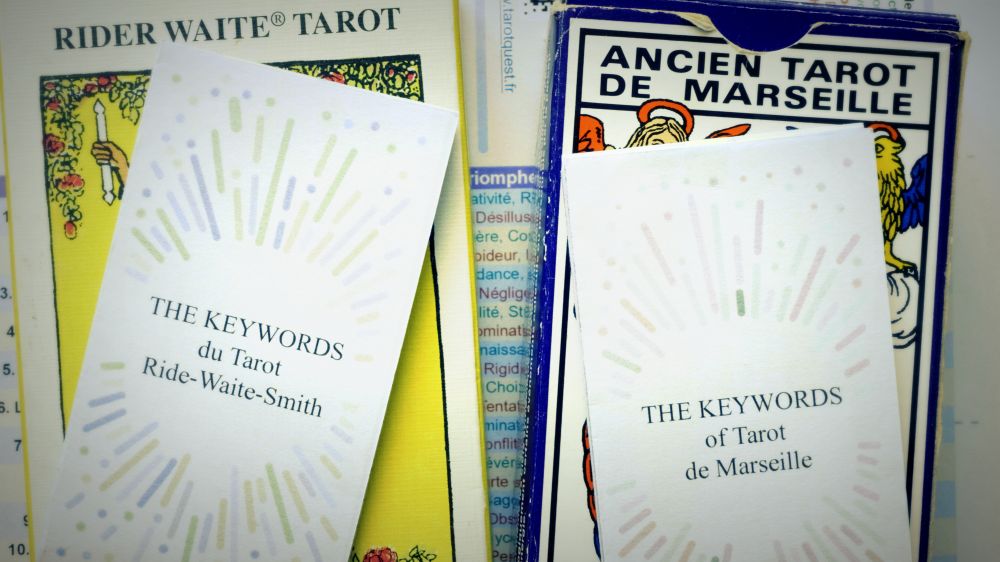
Key words for the 78 cards for the Tarot of Marseille and the Rider-Waite-Smith, to slip into your favorite deck. Your leaflets always with you, at hand, to guide you in your readings. Thanks to them, your interpretations gain in richness and subtlety.
The Maison-Dieu/Tower card symbolizes a process of deep transformation. Disruptions, although difficult, can lead to significant personal evolution. Despite its negative appearance, this card can represent an opportunity for personal growth and development through adversity.
The lightning striking the Maison-Dieu/Tower symbolizes a sudden illumination, a brutal awareness, or a truth that bursts into the open. This can represent a moment of clarity or deep understanding. The name "Maison Dieu" and the divine intervention symbolized by the lightning can represent a sudden spiritual awakening, a divine intervention in the querent's life, or an important spiritual awareness.
Though traumatic, the expulsion of the figures from the Maison-Dieu/Tower can be seen as a liberation from constraints and illusions. It opens the way for a new beginning and the possibility to rebuild on more authentic foundations. The crown falling from the tower can symbolize the liberation from ego illusions, false pretensions, or misplaced ambitions.
In its positive aspect, this card can represent an opportunity for innovation, creativity, and renewal after the destruction of the old.
The destruction of the Maison-Dieu/Tower symbolizes a clear break with the past, old habits, or outdated thought patterns. It is an opportunity to free oneself from what no longer serves.
The scene of the collapsing Maison-Dieu/Tower and the falling figures illustrates the destruction of structures, beliefs, or situations that seemed solid. This can signify the end of a period of stability or the collapse of what was considered as certain. This card can indicate a period of chaos, confusion, or disorder in the querent's life. This can be destabilizing but also bring new possibilities.
The figures falling from the Maison-Dieu/Tower symbolize a brutal confrontation with reality, forcing the querent to face truths they may have ignored or denied. The violence of the scene depicted can indicate a period of crisis, difficulty, or intense emotional upheavals.
The collapse of the Maison-Dieu's structure represents the questioning of fundamental beliefs, value systems, or mental structures of the querent.
The Maison-Dieu/Tower struck by lightning symbolizes sudden and unexpected events that completely disrupt an established situation. This can represent major changes in life, whether positive or negative.
Card XVI - The MAISON-DIEU/TOWER in the Tarot of Marseille occupies a crucial place in the Fool's initiatory journey. It follows Arcana XV THE DEVIL and precedes Arcana XVII THE STAR. This card symbolizes a moment of revelation and deep transformation, where the individual becomes aware of their mistakes and begins to reconnect with their divine essence.
This card appears after THE DEVIL, which represents the extreme of "receiving everything without giving anything". Following this phase of control and egocentricity, the Maison-Dieu marks a point of rupture and awareness.
I see the Maison-Dieu as a moment of revelation and reunion with oneself. The psychological aspects of the card include the awareness of self-fragmentation, the cutting down of the ego, and the reintegration of one's true nature. The card highlights the necessity to recognize mistakes and reconnect with oneself, with one's essence. With the next card, THE STAR, we will become ourselves again.
| Symbolic interpretation | Right direction (Positive) | Revelation, illumination, surprise, shock, unexpected, bright idea, outburst, distrust, rebound | Reverse direction (Negative) | Break, accident, fall, destruction, collapse, lightning strike, loss, expulsion, disillusion, excess, pretension, recklessness, imprudence |
| Psychological interpretation | Right direction (Positive) | Understanding, tolerant, open | Reverse direction (Negative) | Proud, megalomaniac, disdainful, ignorant, collapsed, enlightened |
| Advice | |
| Abandon your prejudices, your values, your habits. Accept the views of the other. Open yourself to the truth. Transform your perspectives. Cut the egos including your own. Break the mold. Change your way of acting | |
| Thematic Interpretation | Love | Love at first sight. Adventure. Discovery of deception. Explosive relationship. Sudden separation | Work | Professional questioning. Unexpected transfer. Dismissal. Sudden physical incapacity | Money | Unusual gain. Unexpected generous help. Discovery of fraud. Bankruptcy | Family / Friendships | Blinding truth. Secret revealed. Beneficial crisis. Upheaval of daily life | Health | Quick recovery. Trauma. Unexpected diagnosis. Questioning of lifestyle. Psychological shock or loss. Disturbing and intense dreams |
| Divination / Prediction | Who ? | A close relative. An angry individual. A person in shock | Where ? | A tower. A symbolic place of power | When ? | A discovery. An argument. A dramatic turn. A natural disaster | How ? | By abandoning one's ego. By questioning one's beliefs. By seeing the world differently. By acting differently |
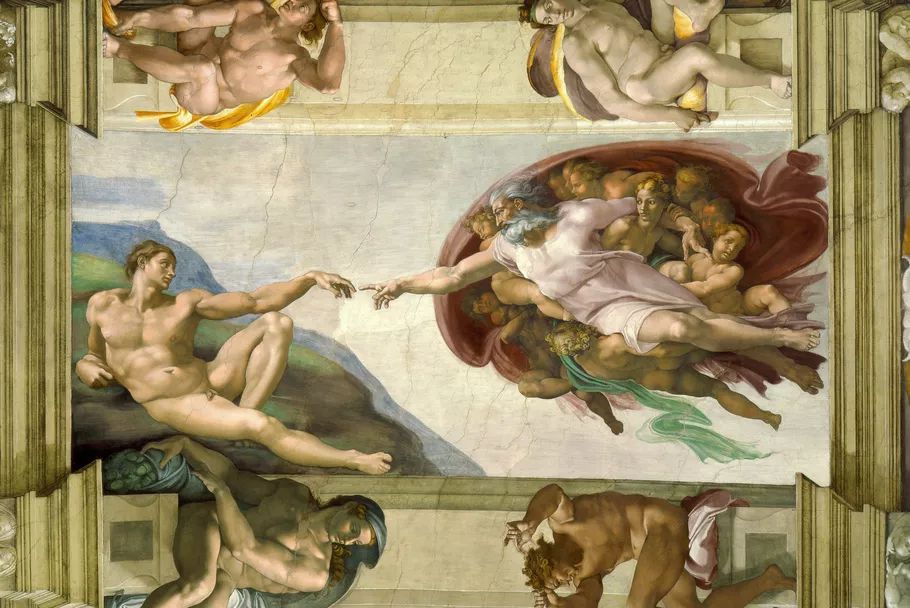
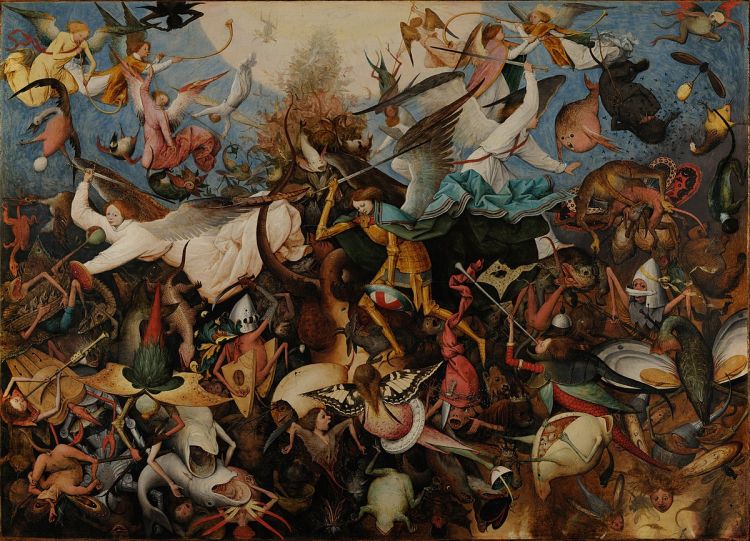
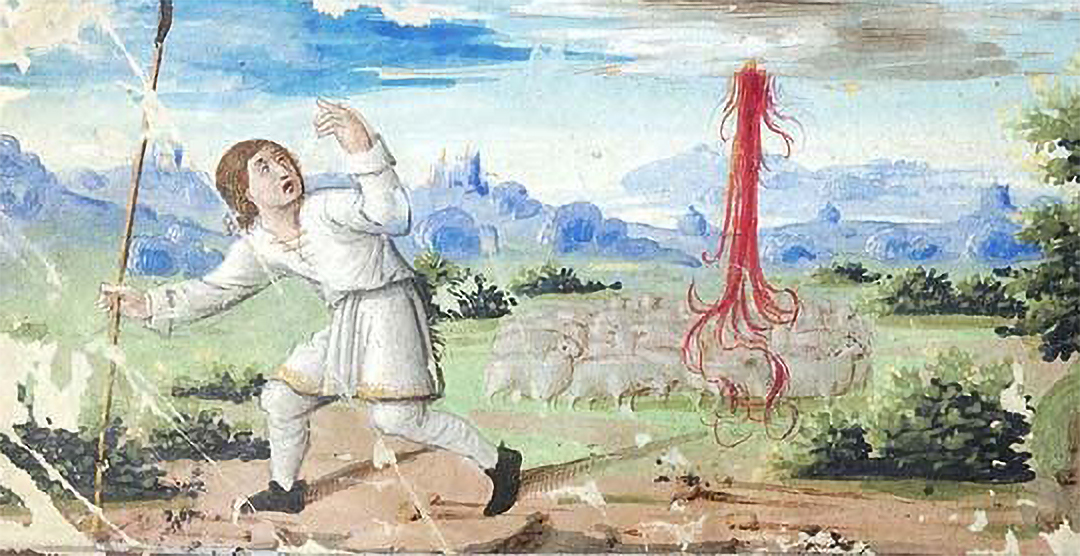
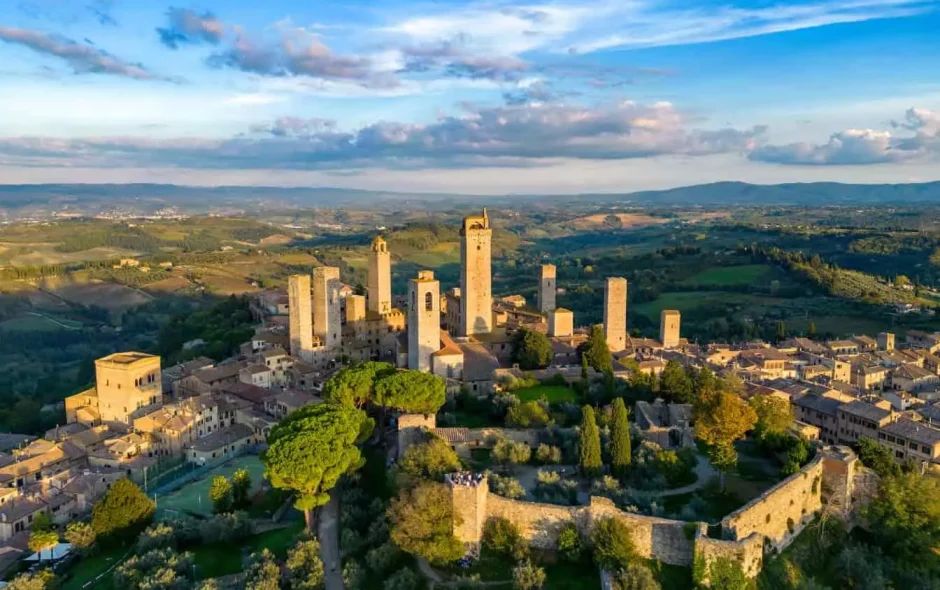
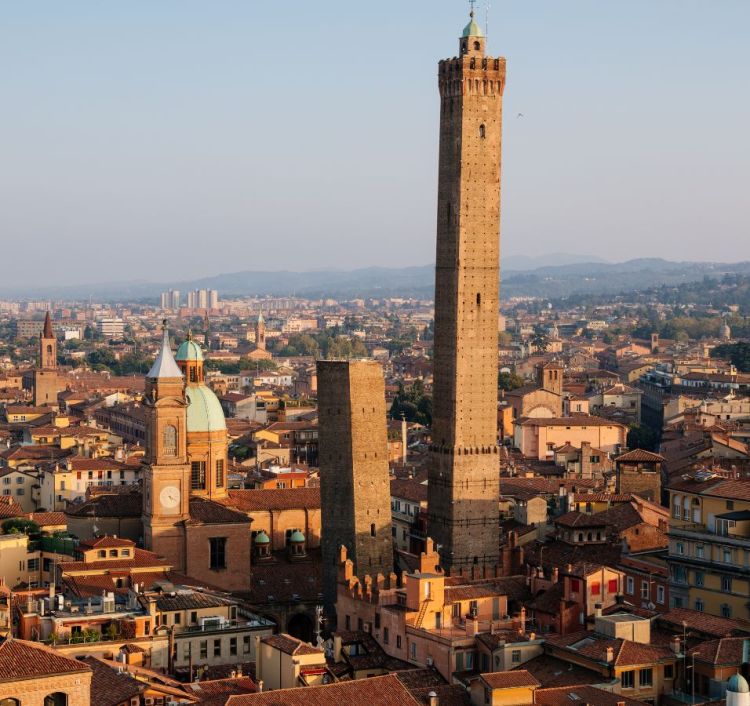
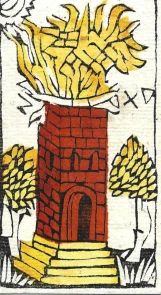
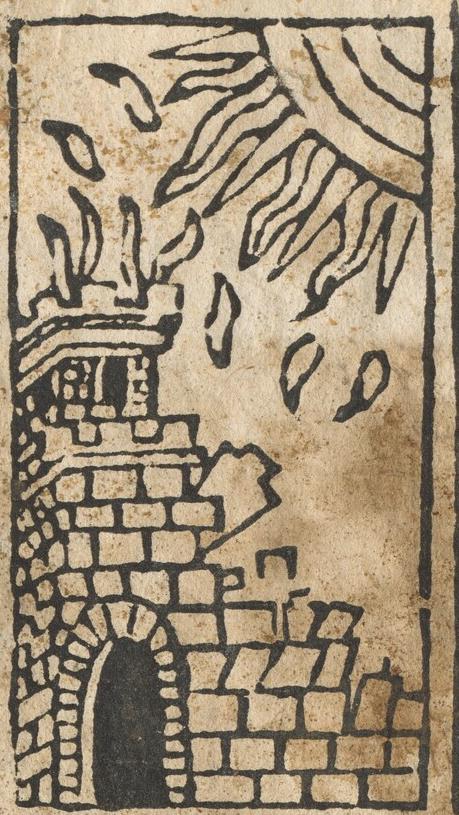
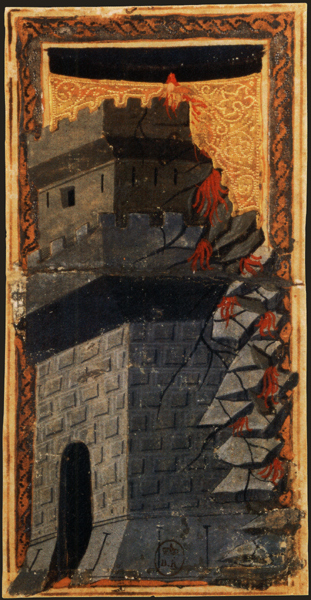
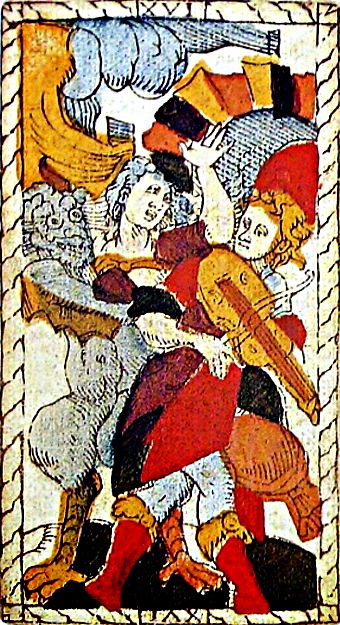
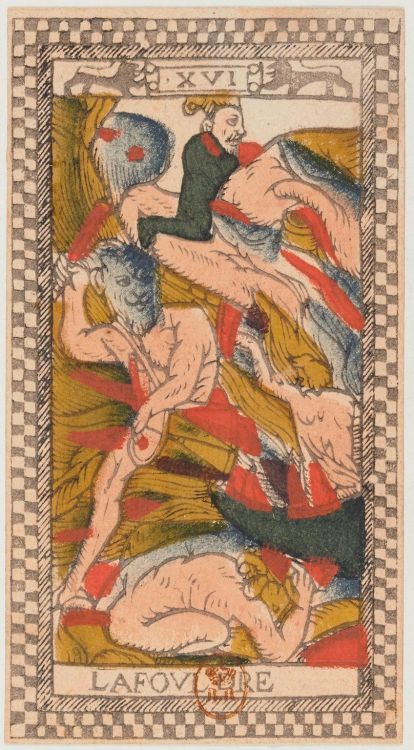
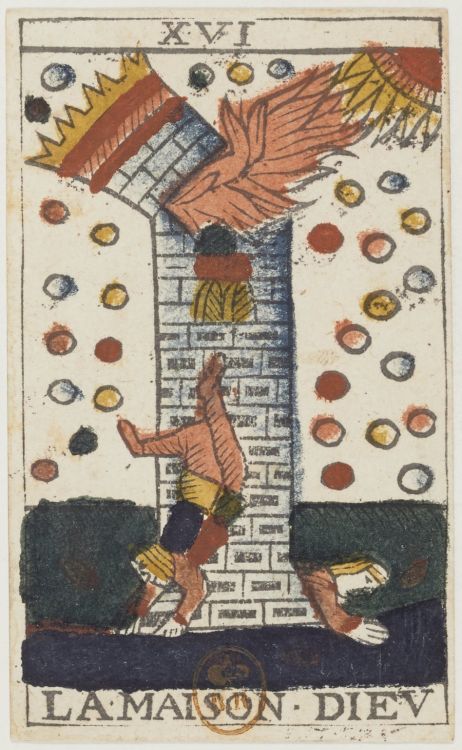
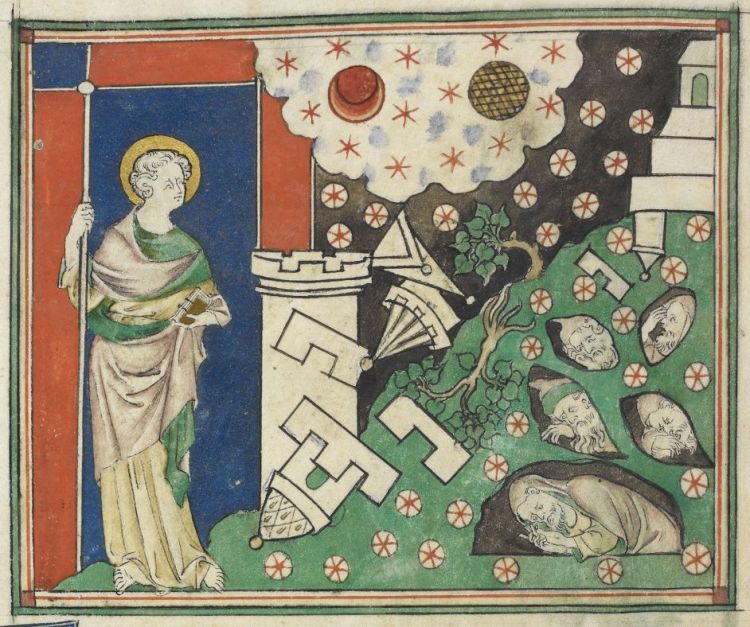
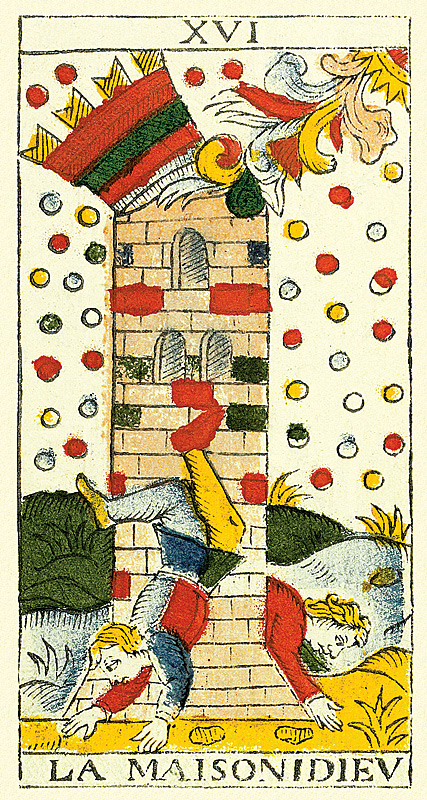
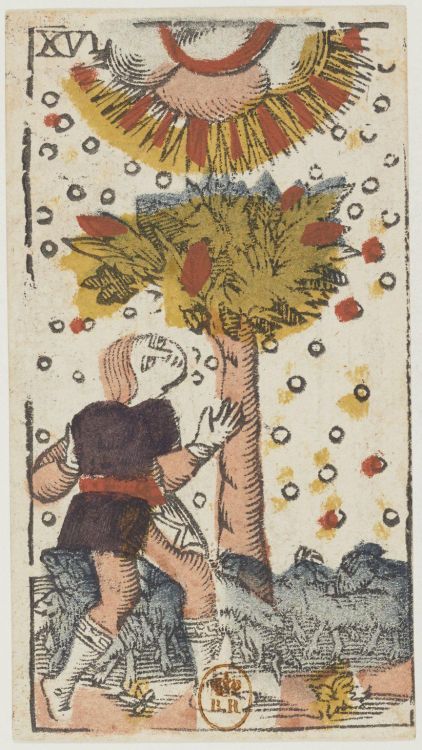
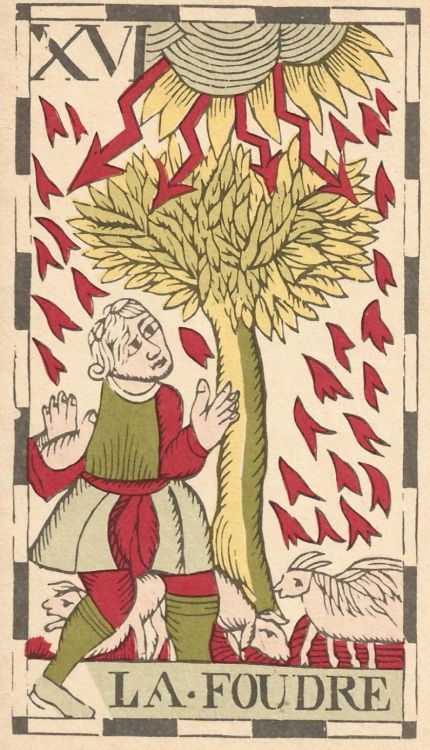
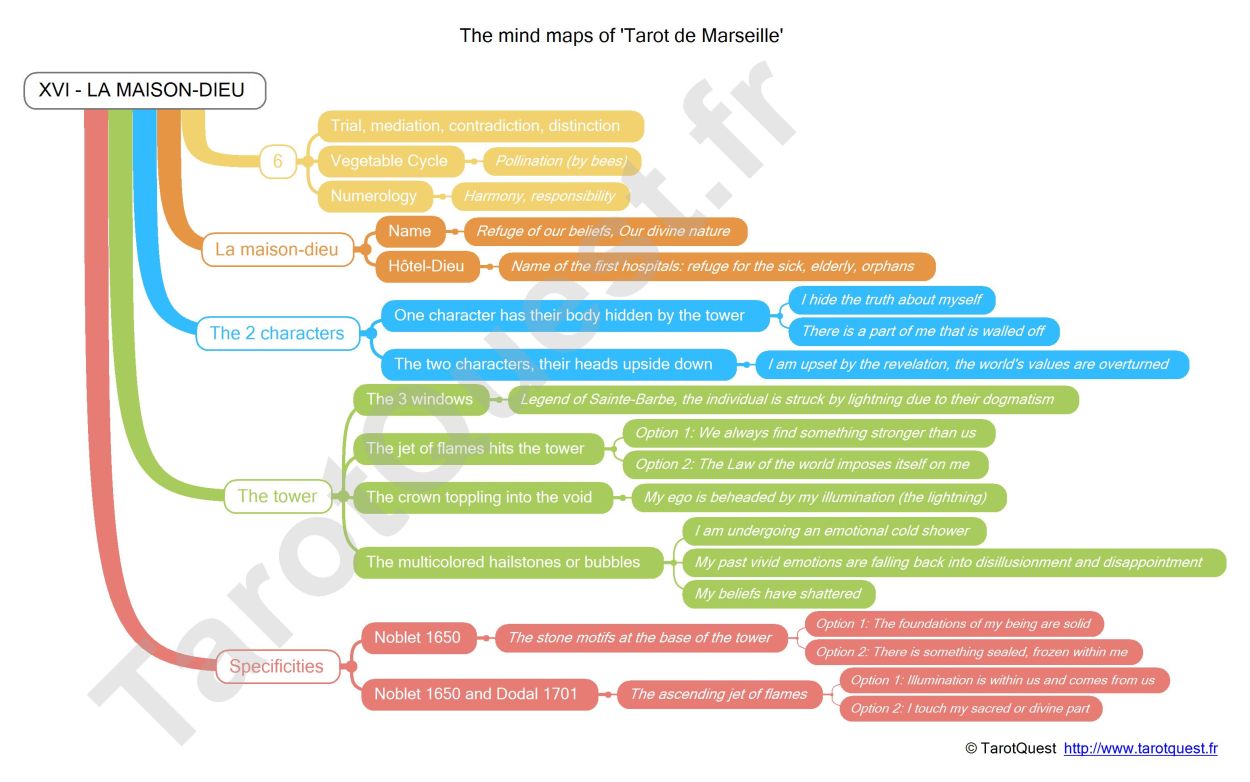
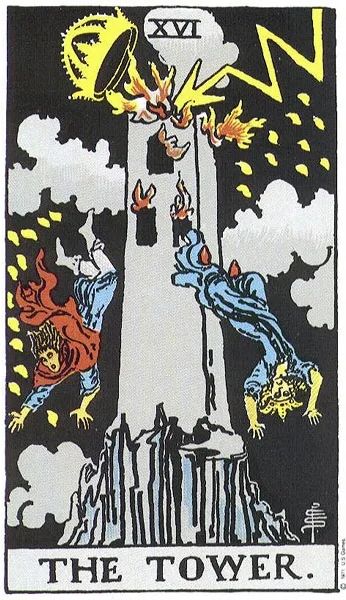
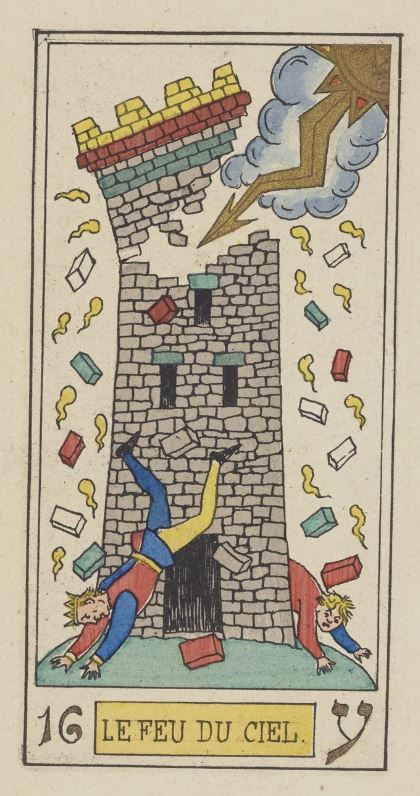
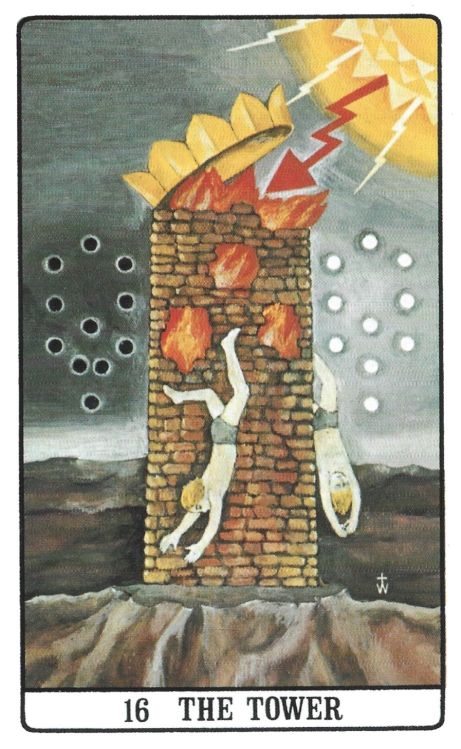
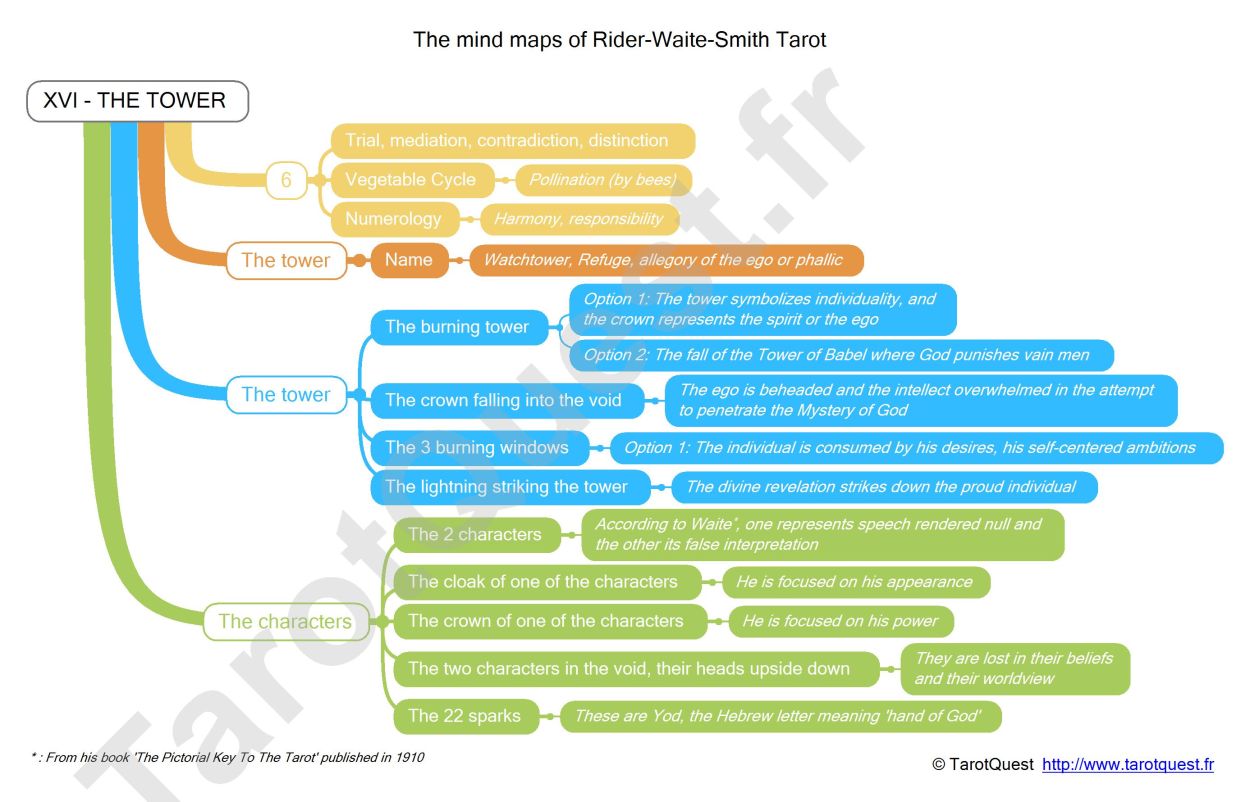
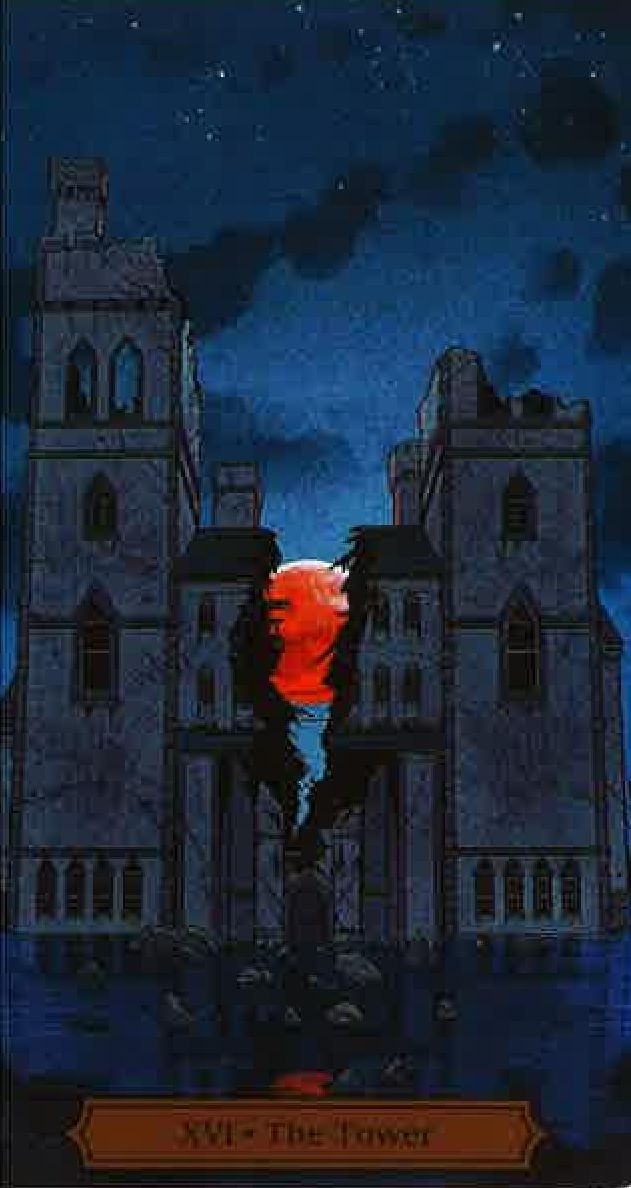
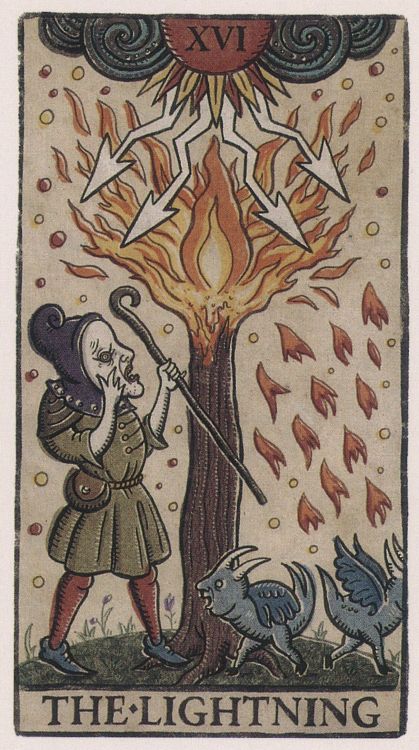
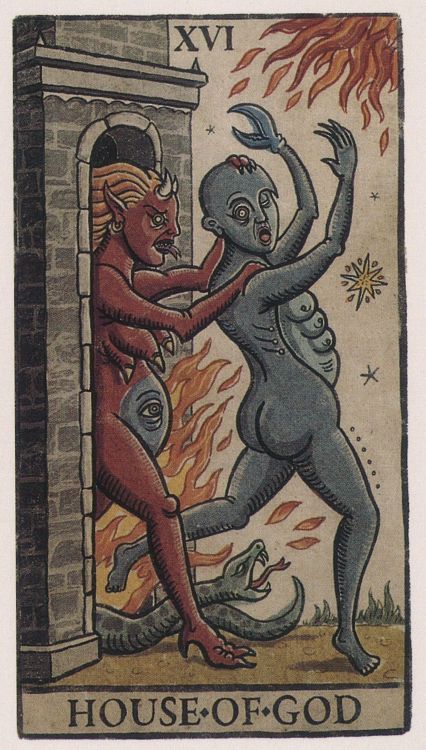
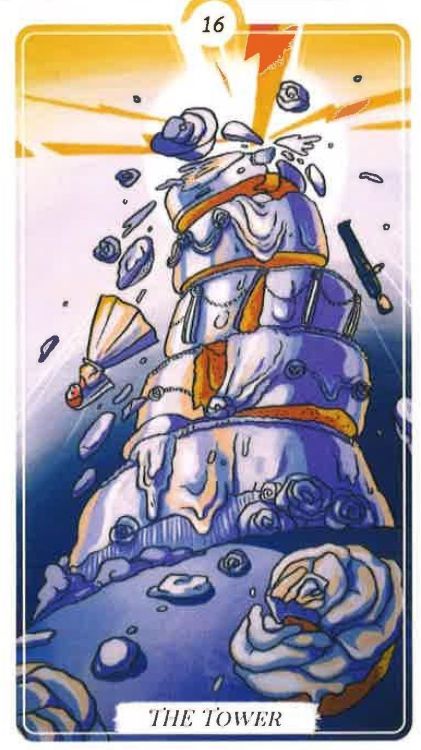
Copyright © TarotQuest.fr